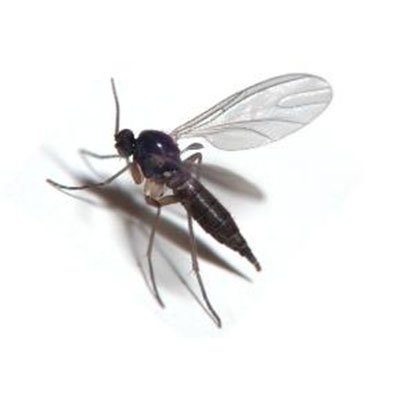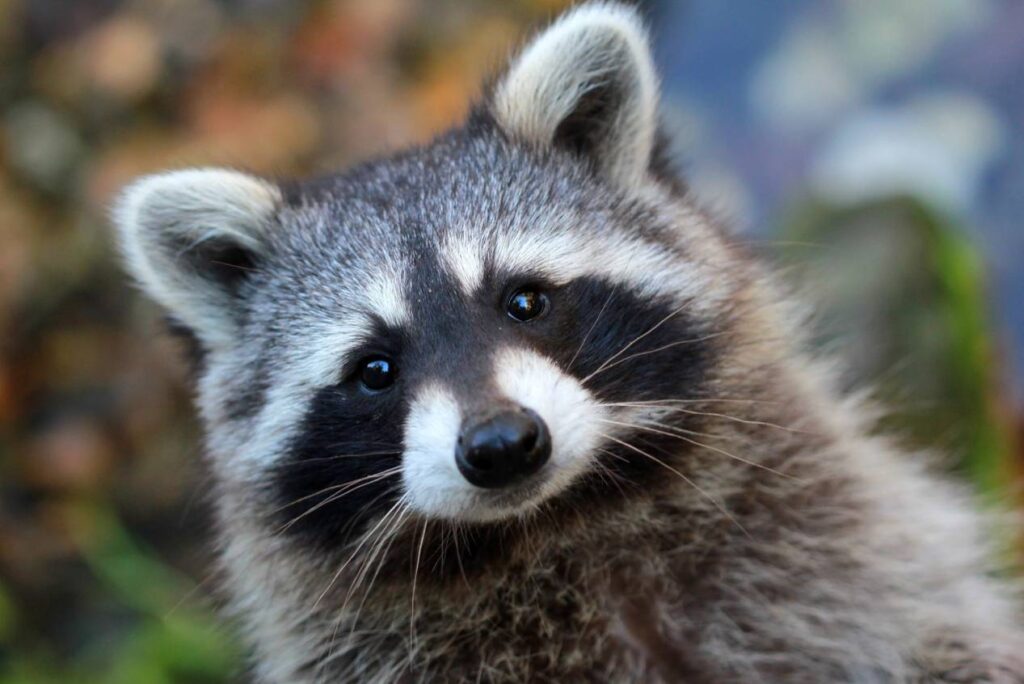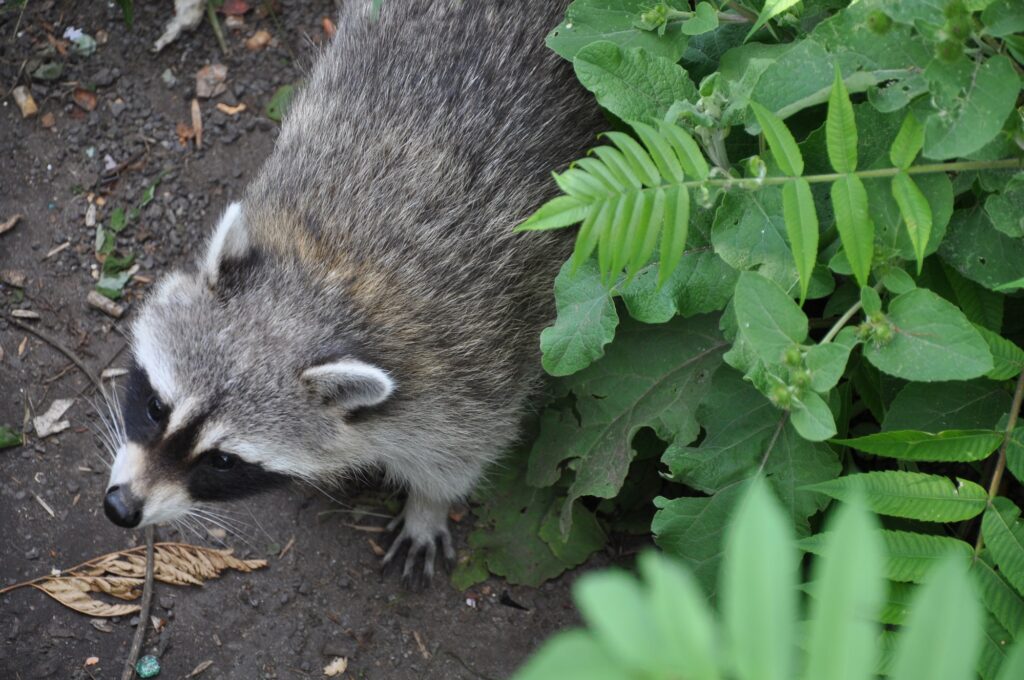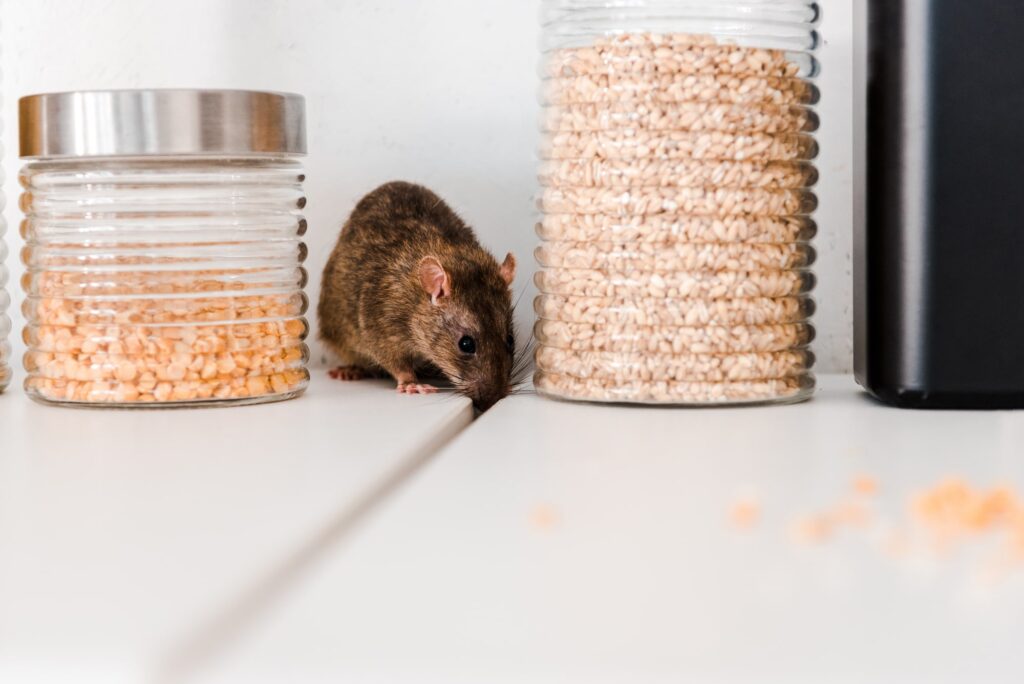
FUNGUS GNAT
Adults are approximately 1/32 to 1/16” long, slender with long legs, similar to mosquitoes. Their colour is usually black, brown or yellowish with smoke coloured wings. Mature larvae are usually slightly longer than respective adults.
Biology
Females lay their ages singly on larval food material and eggs hatch within a few days. They usually pupate in the ground, and adults emerge in about 3 days. The larvae of some species are luminescent (glow). Adults are typically found on or near larval food materials. Larvae feed primarily on fungi growing in the soil and moist decaying organic matter.
Habits
Inside, fungus gnat infestations are almost always associated with the soil of overwatered potted plants and atriums. Secondarily, consider signs of water leaks or moisture problems such as water stains, peeling paint, swelling of walls or wall coverings, to indicate where fungi may be growing which can support larval development. Consider flat roofs which are particularly prone to water leaks. Also, the feces in pet birdcages can be the source if the feces are not removed in a timely manner. Outside mulched areas and the soil associated with them is usually the source.
Control Methods
The key to control is finding and eliminating all the breeding sources, so don’t stop until all potential sources have been inspected. Look for moist/damp areas which will support fungal growth. Inside, check the soil of potted plants and atriums and then move on to the other areas mentioned above. Once the source has been found the key to solving the problem is to either remove or dry out the moist material so that it can no longer support fungal growth. Sometimes turning over the top 2-3” of soil and adding fans to blow over the moist surface will speed the drying process. Insect light traps work well to reduce the numbers of adults indoors.
Once the source has been eliminated a non-residual space treatment can be used to quickly kill the remaining adults if necessary.

True or false quiz: Can you identify the signs of an infestation?
If you live in Canada, you’ve probably encountered some creepy crawlies at one point or another — from rodents and cockroaches to bed bugs and ants, many different pests can plague your home or business. Therefore, it’s important to be able to detect the signs of an infestation and promptly treat the problem before it…

Is it a skunk or raccoon?
Skunks and raccoons are common in rural and urban areas across Western Canada. While they might look cute, both animals can do damage to your home and property. So how do you know if you have a skunk or raccoon problem? Here are some clues. Raccoons The raccoon is a small to medium-sized North American…

What’s digging up my yard? Skunks or raccoons?
Do you see signs of vandalism in your yard and suspect it to be the work of some furry culprits? Skunks and raccoons are particularly active in the fall when they’re bulking up for winter and in spring when they’re at their hungriest. Here’s a guide to help you determine what kind of pests you’re…

Common Diseases Spread by Rodents
Rodents such as rats and mice are common in North American yards and homes. Did you know that rodents also carry more than 35 diseases, some of which are dangerous and even deadly to humans? Here are six pathogens that can be spread by rodents. Hantavirus is extremely dangerous to humans because there are no…

